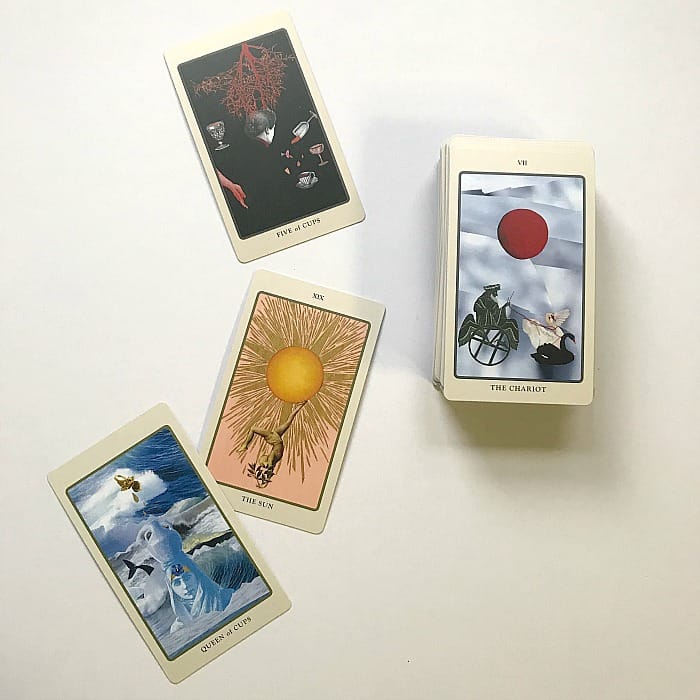
I was quick to hit buy when the doors to the Spolia Tarot crowdfunding campaign. It was an easy yes for me because artist Jen May’s images looked uh-mayzing. Plus, I love Jessa Crispin’s The Creative Tarot. I knew that if these two were collaborating on a tarot deck, it would meet my expectations.
It exceeded them.
The deck is stunning. The colors pop and the collage-style images are filled with symbols that lend well to deep, meaningful interpretations. Printed on a matte cardstock, the cards feel sturdy and shuffle well. I could tell right away that this deck would stand up to years of readings. I’m a high volume tarot reader, so this detail is important to me. And then there is the “little white book.” Normally, I toss these things but not this one. Crispin’s writing is so elegant, witty, and smart, it makes reading this LWB a joy – and a must. As I dug into her interpretations, I saw the cards come alive in new ways. With literary references, modern jargon, and some swear words for good measure, this LWB spoke to me. I devoured it. This is the mark of a good tarot deck: great images combined with a book that speaks the language of tarot in a fresh manner. For old skool tarot readers like myself, this is like shaking off old cobwebs and purging the standards for a new order.
While I’m normally not a fan of extra cards (this deck has 94 instead of the usual 78), in this case, I began using the astrological cards as significators. This saved me from having to dig around and pick a King, Queen and so forth. Instead, I could just focus on the querent’s sign and bingo – there’s a card for it! (In case you want to know more about significators, here’s a post on them.)
After playing around with The Spolia Tarot, I knew I had to speak to Jessa Crispin. Fingers crossed, I sent off an email and was grateful that she took the time to answer my questions. Here’s our conversation:
Q: What is the inspiration behind the Spolia Tarot?
Jessa: Jen and I had been collaborating on a few pieces — I was writing a column about the tarot for Ohio Edit, and Jen was illustrating them. We worked really well together, it was just an impulse. I had too much wine in Romania and emailed Jen, “Do you want to do a whole deck with me?” And that was that.
I had been a reader for years at that point, and I had about a decade of research and curiosity about the deck, so of course, it’s a dream to do your own deck. To be able to pull from all of these different areas of knowledge — artistic, historical, astrological, mythical — and create something new. But to still be able to honor the tradition. Both of us wanted this to be a deck that you could use. That you could read from for years and still learn new things from it. I’m still learning from it, noticing little coincidences and happy accidents and synchronicities with it, and I thought I had a level of control over it. But tarot is a living thing. It changes with use, and it changes you with use. So the deck turned out even better than I could have imagined.
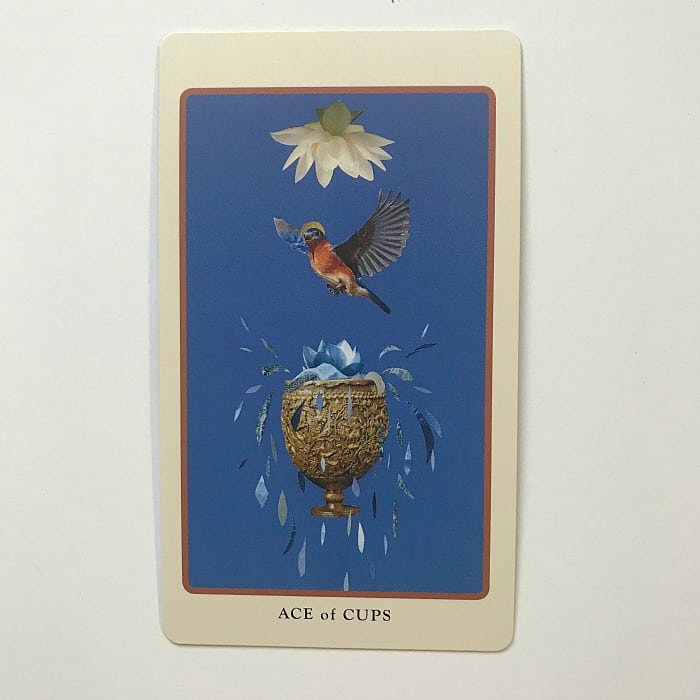
Q: Like the Minchiate, this deck has 97 cards instead of the standard 78. For people who are hung up on the traditional structure of a tarot deck, how might they incorporate these cards?
Jessa: We didn’t do a full Minchiate, in that there is only one emperor, not two, and the extra virtues were left out. That’s because we wanted to leave the numbering system intact. The extra cards, then, were just Zodiac and Elementals.
If someone is a Rider Waite Smith purist, they are of course free to take the extra cards out of the deck! But if they’re curious, I did write up in the manual how the cards can be used. Part of my reasoning for leaving them in is that the readings I do in my own practice combine astrology and tarot — my clients get a full work-up of each, and I have noticed over the years how astrology and tarot talk to one another. I wanted a more direct line, as it were. So someone who knows what house is ruled by Leo in their chart, what planets they have in Leo, if they pull the Leo card, it might speak to them in a different way than if someone is just using it to say, be bold, be playful, be pure of heart.
But also I wanted to recapture some of the wilderness of tarot! The standard deck was not always the standard deck, people did things differently and they experimented. It’s safe to mess with the structure, as long as you do it thoughtfully.
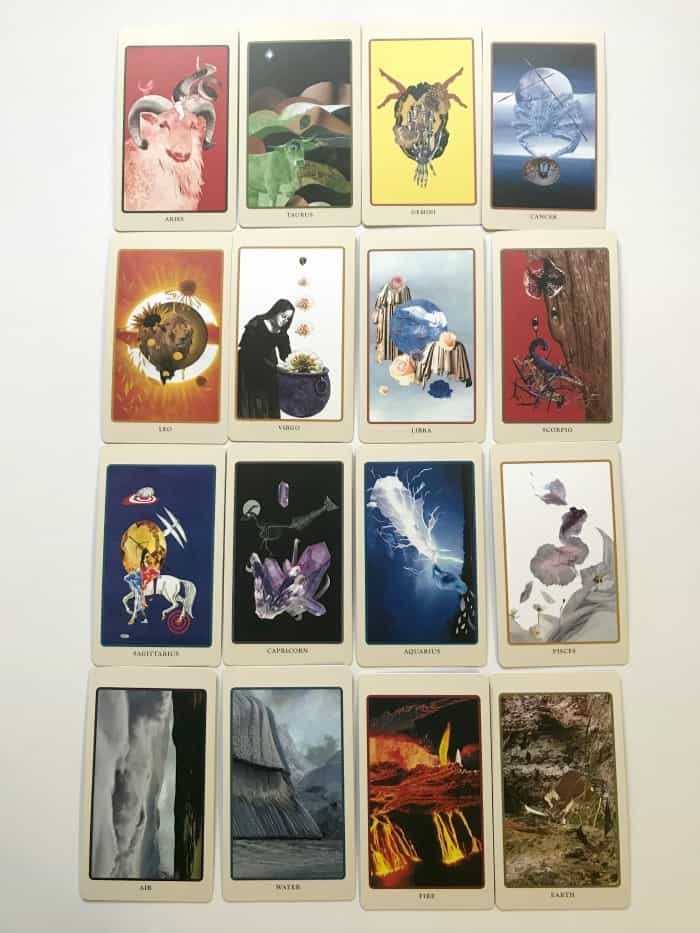
Q: What was it like to collaborate with Jen May?
Jessa: It was a dream. I had more working knowledge of the deck than she did, as far as the history was concerned. She was working more intuitively. But our brains just sorted of worked well together.
Our process was just to work on one card at a time, and that card was selected mostly just on how we felt at the time, whether we felt ready for it. So we’d look at how other people did that card, I’d give her probably too much information about astrological and mythological associations (I would write up a whole huge email on each card about its meaning and variations), and we’d work to figure out what imagery would best convey the meaning. Then she would take all of that information and transform it into something beautiful.
We did this for three years, with a daily back and forth, which is something I definitely miss now that the deck is complete. Just getting to geek out with my friend, talking about the iconography of snakes or the mythical meaning of marigolds or whatever.
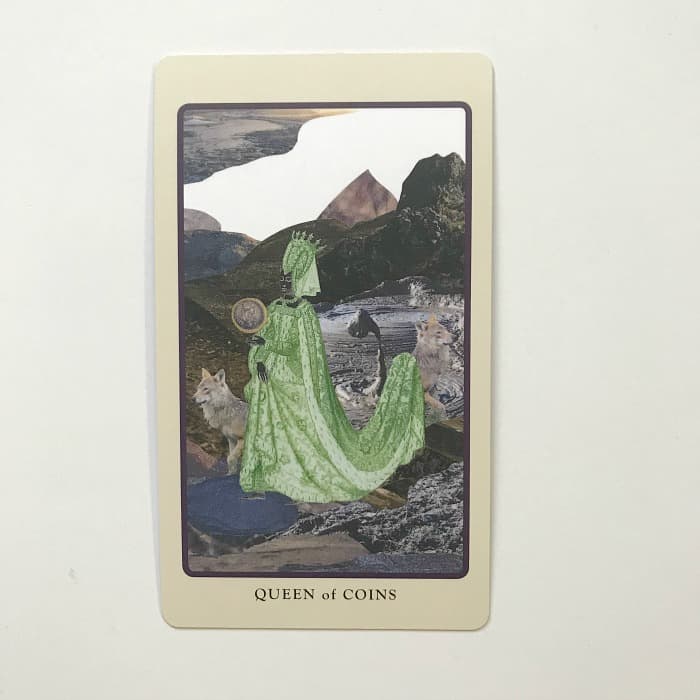
Q: Were there any times when you two disagreed on how a card should be represented?
Jessa: I honestly can’t think of it. There were cards we definitely struggled with, but it was a mutual struggle, a mutual understanding of, oh, this isn’t quite right yet. We were pulling from similar reserves — we are both water signs with Taurus rising, we both obsess over John Wick and Hedwig and the Angry Inch and Sleater-Kinney albums — so we were never really at odds with one another. I don’t think either one of us came to this with our egos dominant, we were just having a good time.
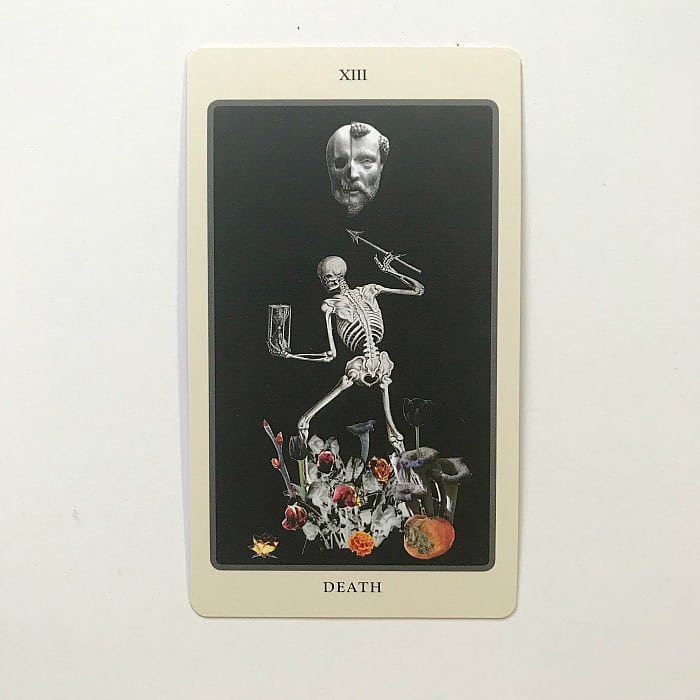
Q: Lastly, besides the addition of the extra cards, what makes the Spolia Tarot different from traditional tarot decks and how might this benefit readers?
Jessa: I would say this deck is part of the tradition of tarot, rather than a disruption. Having a Cancer sun, I am very conscious of, you know, let’s go digging around in the past to see what people have forgotten and bring it back up into the light. I spent a lot of time with older decks, decks that pre-dated the Golden Dawn and the Rider Waite Smith, to see what had been discarded. But I wanted to keep intact the mystery cults’ emphasis on combining astrology and alchemy with the tarot imagery. Basically what I wanted was a Rider Waite Smith married to a Sola Busca married to a Minchiate married to the Picatrix married to a Botticelli painting married to etc etc, and when I couldn’t find it out in the world, we decided to make it together.
That said, we were of course very clear that it could not be White People Tarot, and it could not be Heteronormative Tarot. We definitely wanted it, though, to be timeless rather than MODERN, if you get my meaning. The word Spolia means to use rubble as building material, to take what is broken to decorate or to build something new, and it seemed like a perfect word to describe the whole project.
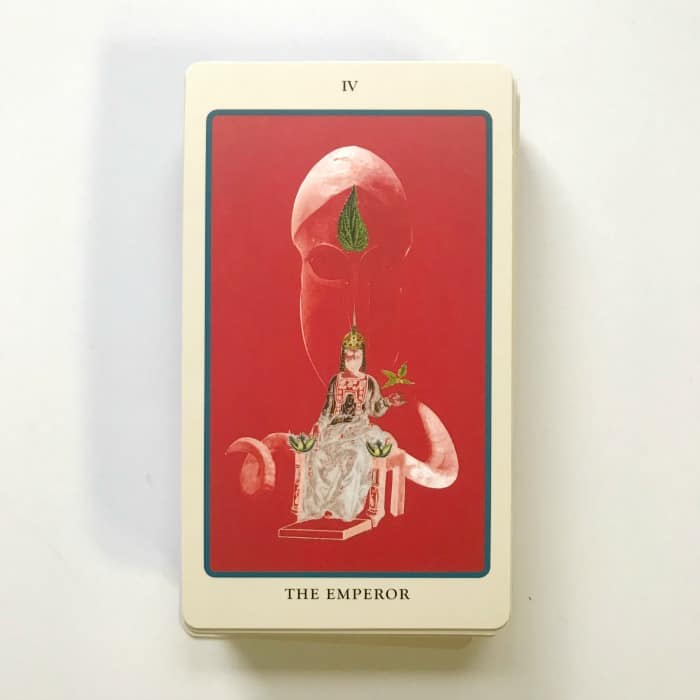
In my humble opinion, this is a tarot deck that every fanatic or professional reader will love. This collaboration was a huge win for the tarot community.
You can learn more about The Spolia Tarot and make your purchase here.
Learn more about Jessa Crispin here. Get to know artist Jen May here.
Many thanks to Jessa for taking the time to chat with me! And extra big props to Jessa and Jen for creating such a beaut!
Blessings,
Theresa
© Theresa Reed | The Tarot Lady 2018
images from personal collection

 I’m Theresa Reed (aka, The Tarot Lady). I’ve been a full-time tarot reader for 30+ years — which, in my industry, makes me pretty badass.
I’m definitely not your average Tarot expert — I drop the F-bomb, I quote rappers, and I’m obsessed with pop culture + reality TV. Folks come to me for straight-talk + tough-love — without the woo-woo fluff.
I’m Theresa Reed (aka, The Tarot Lady). I’ve been a full-time tarot reader for 30+ years — which, in my industry, makes me pretty badass.
I’m definitely not your average Tarot expert — I drop the F-bomb, I quote rappers, and I’m obsessed with pop culture + reality TV. Folks come to me for straight-talk + tough-love — without the woo-woo fluff.
You must be logged in to post a comment.